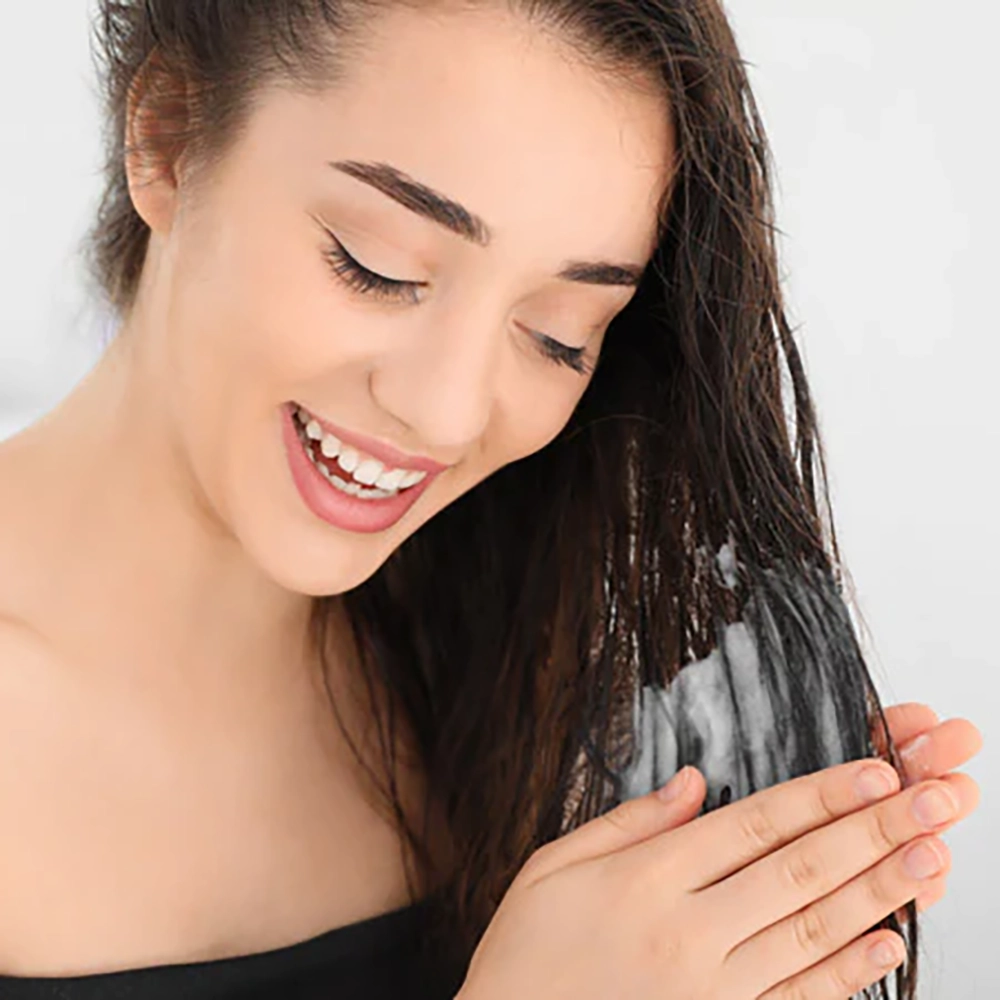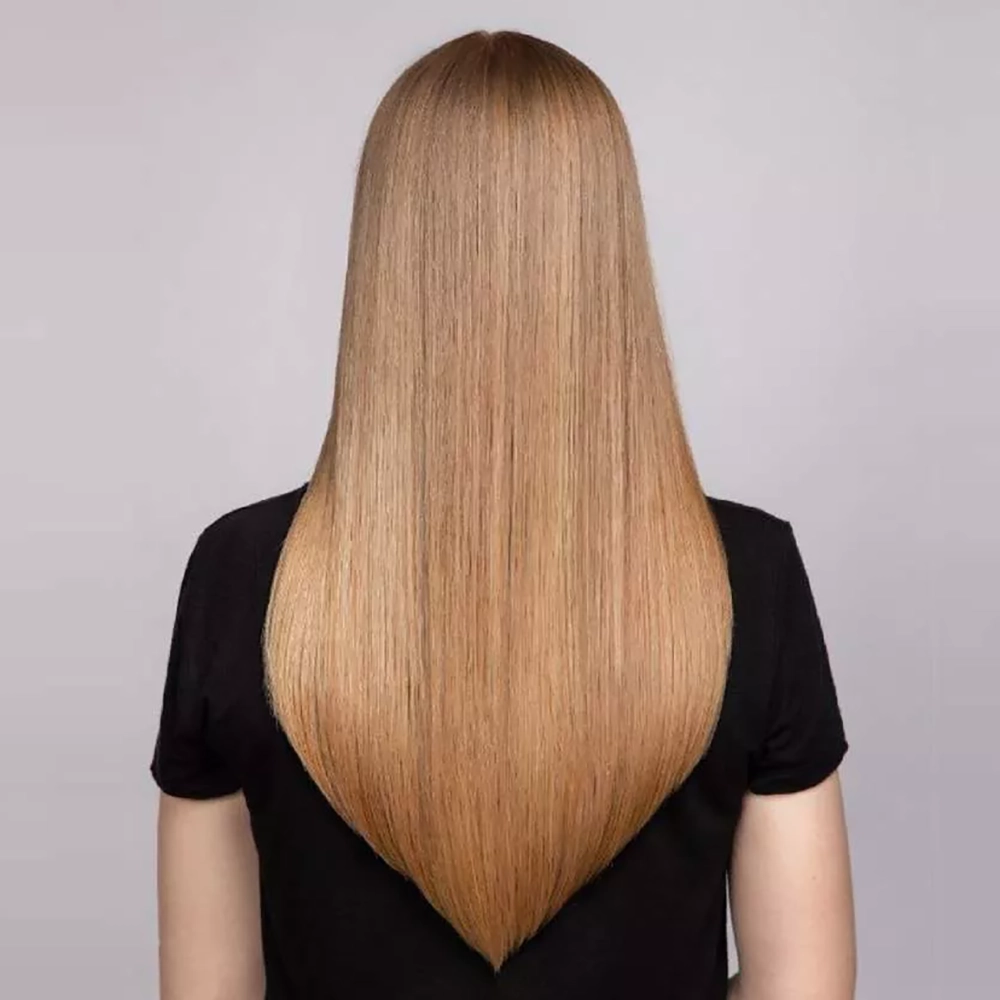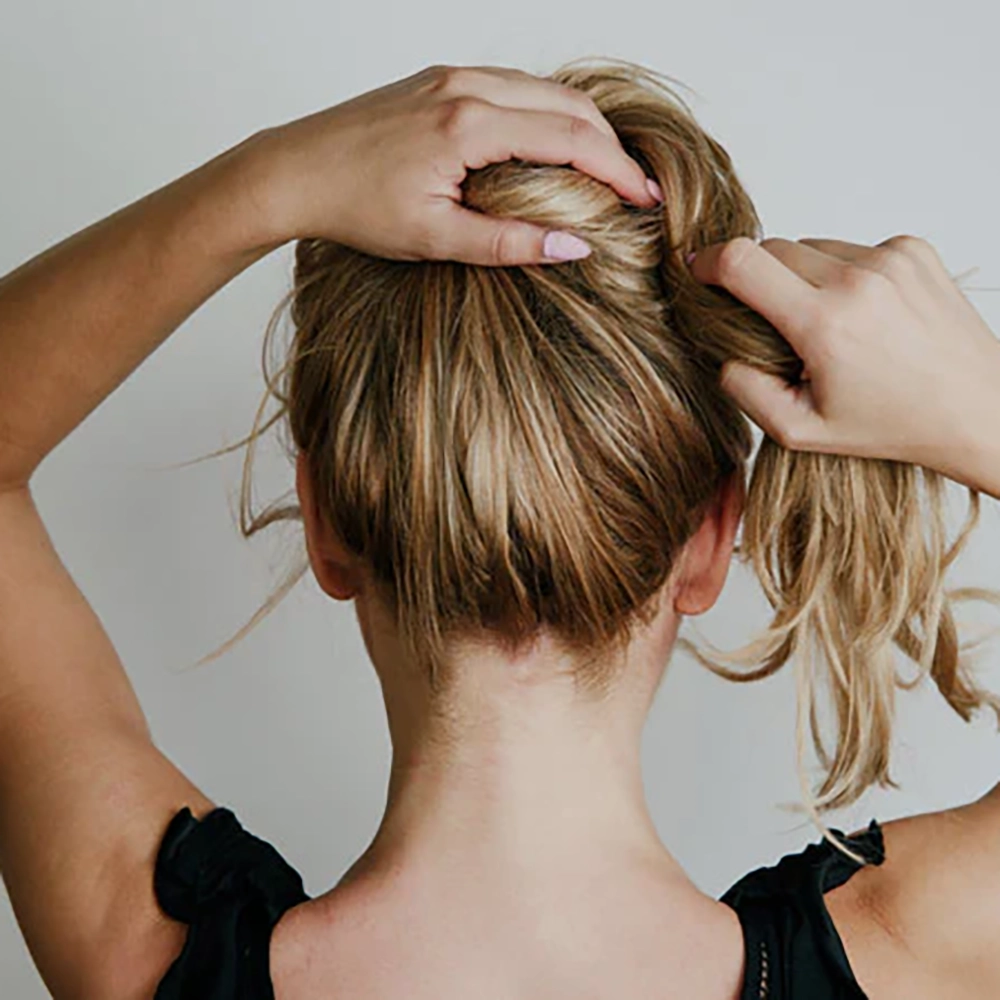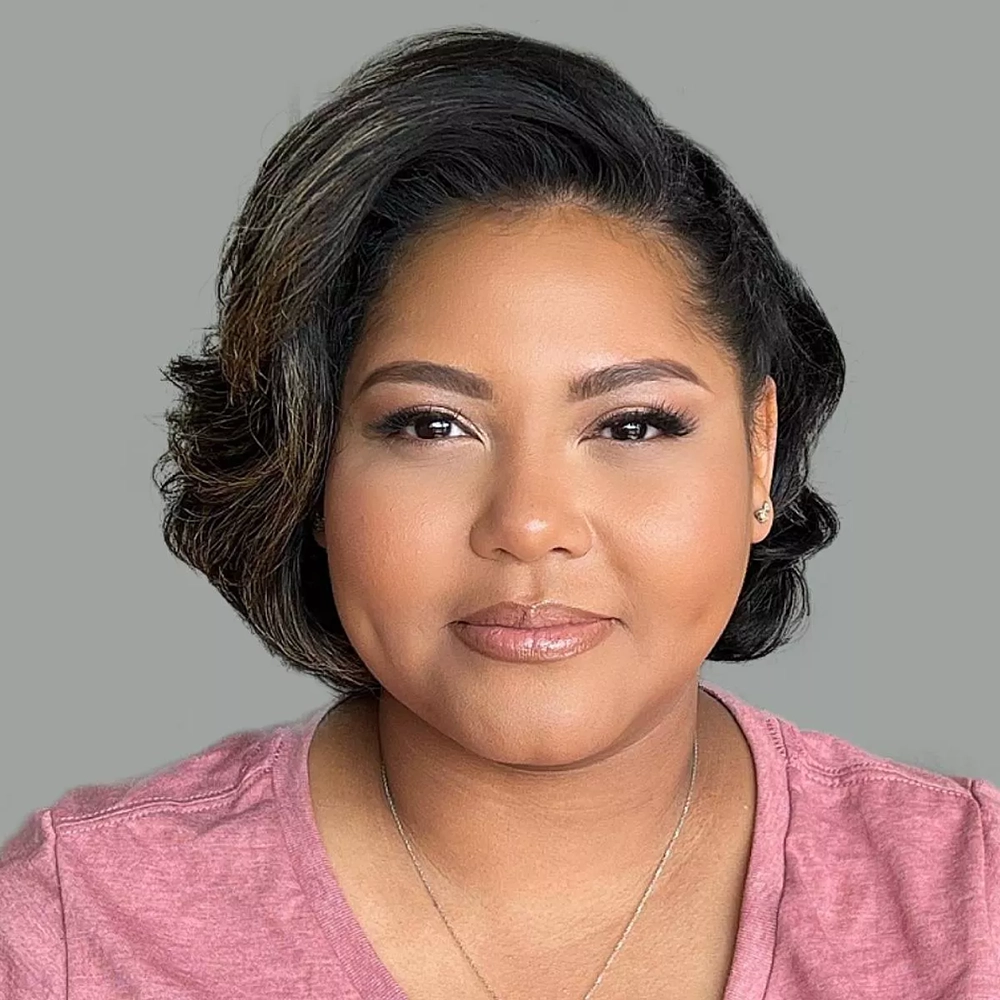Understanding the basics of perming short hair
Perming short hair can be a great way to add texture and volume to your locks. It’s a popular choice for those who want to change up their hairstyle and experiment with different looks. However, before you dive into the world of perming, it’s important to understand the basics. In this blog post, we will discuss everything you need to know about perming short hair and how to achieve the best results.
Firstly, let’s talk about what perming actually is. Perming is a chemical process that alters the structure of your hair to create curls or waves. It involves applying a perm solution to your hair, which breaks down the protein bonds and allows the hair to mold into a new shape. This new shape is then set using rods or rollers, and a neutralizer is applied to lock in the curls or waves. The result is a long-lasting texture that can completely transform your look.
When it comes to perming short hair, there are a few things to consider. The length of your hair will determine the type of perm you can get. Generally, short hair refers to hair that is above the shoulders. While this might limit your options compared to those with longer hair, there are still plenty of styles to choose from. Some popular perm styles for short hair include spiral perms, body wave perms, and root perms. Each of these styles creates a different type of curl or wave, so it’s important to choose one that suits your desired look.
Before you decide on a perm solution, it’s essential to consult with a professional hairstylist. They will be able to assess your hair type and determine which perm solution is best for you. The strength of the perm solution will depend on the condition of your hair and the type of curls or waves you want to achieve. It’s important to choose a solution that is suitable for short hair to ensure the best results. Your hairstylist will also be able to advise you on any pre-perm preparations you need to do, such as avoiding certain hair products or treatments.
- Choose a suitable perm solution for short hair
- Consult with a professional hairstylist
- Consider the length of your hair
- Understand the perming process
| Perm Type | Description |
|---|---|
| Spiral Perms | Create tight, spiral-like curls throughout the hair |
| Body Wave Perms | Produce loose, natural-looking waves |
| Root Perms | Add volume and lift to the roots of the hair |
Once you have chosen the right perm solution and discussed the desired outcome with your hairstylist, it’s time to prepare your short hair for perming. This usually involves washing your hair with a clarifying shampoo to remove any buildup or residue. It’s important to have clean, dry hair before the perming process.
The perming process for short hair typically involves sectioning the hair and applying the perm solution to each section. The hair is then wrapped around rods or rollers to create the desired curls or waves. The perm solution needs time to process, and this can vary depending on the type of perm and your hair’s texture. Once the processing time is complete, a neutralizer is applied to lock in the new shape. After rinsing and styling, you can enjoy your beautifully permed short hair.
Maintenance and aftercare are crucial to keep your permed short hair looking its best. It’s important to use sulfate-free shampoos and conditioners that are specifically designed for permed hair. Regular deep conditioning treatments can help keep your hair hydrated and prevent damage. Avoid heat styling tools as much as possible, as they can weaken the curls or waves. Instead, embrace air-drying or use heat-free styling methods to maintain your permed hairstyle.
In conclusion, perming short hair can be an exciting and transformative experience. Understanding the basics of perming, choosing the right perm solution, and following proper aftercare are essential for achieving the best results. Remember to consult with a professional hairstylist who can guide you through the process and help you achieve the curls or waves you desire. So, go ahead and embrace the world of perming, and rock your fabulous permed short hair!
Suitable hair lengths for perming
If you are considering getting a perm, one of the first things you need to determine is the suitable hair length for perming. Not all hair lengths are ideal for perming, as the process involves chemically altering the structure of your hair. Therefore, it is essential to understand which hair lengths are compatible with perming to achieve the desired results.
Short Hair:
Short hair lengths are generally suitable for perming. However, it is important to consider the texture and thickness of your short hair before deciding on perming. The length of the hair should be at least 4 inches to ensure there is enough hair to create the desired curls. Short haircuts such as pixie cuts or bob cuts can be permed to add volume, texture, and movement. Additionally, perming short hair can help in achieving a more manageable and versatile style.
Medium-Length Hair:
Medium-length hair is also a suitable length for perming. This hair length provides enough space for the curls to form and hold their shape. Perming medium-length hair can add bounce and body to the hair, creating a voluminous and stylish look. It is important to note that the thickness and density of the hair should also be taken into consideration. Fine or thin hair may require a different approach to ensure the curls are properly defined and long-lasting.
Long Hair:
Long hair can also be permed, but it is important to consider the length and weight of the hair. The longer the hair, the heavier it is, which can affect how well the curls hold. Long hair may require additional support, such as using larger-sized rods or rollers, to create long-lasting curls. It is advisable to consult with a professional hairstylist to determine the most suitable perm solution and technique for perming long hair.
In conclusion, when deciding to get a perm, it is crucial to consider the suitable hair lengths for perming. Short and medium-length hair are generally ideal for perming, while long hair may require additional considerations. Consulting a hairstylist is always recommended to ensure the best results and to choose the most suitable perm solution for your hair length and desired style.
Choosing the right perm solution for short hair
Choosing the right perm solution for short hair is crucial to achieving the desired look. Perming is a popular hair treatment that adds curls or waves to straight hair. It involves using chemicals to break down the hair’s natural bonds, allowing it to be reshaped. However, not all perm solutions are suitable for short hair. Different hair types require different formulations to ensure the best results. In this blog post, we will discuss the factors to consider when selecting a perm solution for short hair and provide some tips to help you make the right choice.
Firstly, it is important to understand your hair type before choosing a perm solution. Short hair can vary in texture, thickness, and condition, so selecting a perm solution that suits your specific hair type is essential. Whether you have fine, medium, or coarse hair, there are specific perm solutions designed to work best with each hair type. Consulting a professional hairstylist who specializes in perming can help you determine your hair type and recommend the appropriate perm solution.
Secondly, consider the desired outcome when selecting a perm solution for short hair. Are you looking for loose, natural-looking waves or tight, bouncy curls? The desired curl pattern will also help determine the type of perm solution to use. There are various types of perm solutions available, each designed to create a specific curl pattern. For example, alkaline perms are suitable for creating tight curls, while acid perms are better for loose, beachy waves.
Lastly, it is important to take into account the condition of your hair when choosing a perm solution. If your hair is already damaged or chemically treated, using a harsh perm solution can further compromise its health. Opting for a milder perm solution or seeking professional advice can help minimize damage and ensure the best results. Additionally, consider incorporating a regular hair care routine that includes deep conditioning treatments and using products specifically formulated for permed hair to maintain the health and longevity of your curls.
| Factors to Consider When Choosing a Perm Solution for Short Hair: |
|---|
| Hair Type: Fine, medium, or coarse hair |
| Desired Outcome: Loose waves or tight curls |
| Condition of Hair: Healthy or chemically treated |
Choosing the right perm solution for short hair is essential for achieving the desired results while minimizing damage. By considering your hair type, desired outcome, and the condition of your hair, you can make an informed decision. Remember to consult a professional hairstylist for expert advice and guidance. With the right perm solution, you can transform your short hair into gorgeous curls or waves that perfectly complement your style.
Different types of perms for short hair
When it comes to perming short hair, there are various types of perms that you can choose from to achieve the desired look. Perms are a popular way to add texture and volume to short hair, and they can range from loose waves to tight curls. In this blog post, we will explore the different types of perms that are suitable for short hair and provide you with all the information you need to make an informed decision.
One type of perm that is commonly used for short hair is the body wave perm. This perm creates loose waves that add volume and movement to the hair. It is a great option for those who want to achieve a natural and beachy look. Another type of perm is the spiral perm, which creates tight and defined curls. This perm is more suitable for those who prefer a more dramatic and glamorous look.
If you want a more subtle and soft look, you can opt for a spot perm. This perm focuses on adding volume and texture to specific areas of the hair, rather than perming the entire head. It is a great option for those who want to enhance their natural curls or add body to certain sections of their short hair. Other types of perms that can work well for short hair include the stack perm, root perm, and pin curl perm.
Before deciding on the type of perm for your short hair, it is important to consult with a professional stylist. They will be able to assess your hair type and recommend the best perm solution for you. Additionally, it is essential to consider the maintenance and aftercare required for permed short hair. Regular deep conditioning treatments and the use of hair products specifically designed for permed hair can help keep your curls looking healthy and vibrant.
- Body wave perm
- Spiral perm
- Spot perm
- Stack perm
- Root perm
- Pin curl perm
| Perm Type | Description |
|---|---|
| Body wave perm | Creates loose waves for a natural and beachy look. |
| Spiral perm | Creates tight and defined curls for a dramatic and glamorous look. |
| Spot perm | Adds volume and texture to specific areas of the hair. |
| Stack perm | Creates curls that stack on top of each other for added volume. |
| Root perm | Focuses on adding volume and lift to the roots of the hair. |
| Pin curl perm | Creates small, tight curls using pin curls. |
Preparing your short hair for perming
Preparing your short hair for perming is an essential step to ensure a successful and long-lasting result. Before diving into the perming process, it is important to understand the basics and know what to expect.
Understanding the basics of perming short hair: Perming is a chemical process that alters the structure of the hair to create curls or waves. It involves using a permanent wave solution to break the disulfide bonds in the hair, reshaping them into the desired curl pattern. Short hair can be more challenging to perm compared to longer hair as it requires careful sectioning and proper preparation.
Suitable hair lengths for perming: While perming can be done on any hair length, certain lengths are more suitable for optimal results. Generally, hair that is at least 3-4 inches long is ideal for perming. This allows the curls to have enough length and bounce. Very short hair may not hold the curls well, while extremely long hair may result in loose, stretched-out curls.
Choosing the right perm solution for short hair: The type of perm solution you choose is crucial for achieving the desired look on short hair. There are different types of perm solutions available, ranging from alkaline to acid-based. Alkaline perms are typically used for strong, firm curls, while acid-based perms create softer, more voluminous curls. Consult with your hairstylist to determine the most suitable perm solution for your hair type and desired outcome.
- Alkaline perms: Strong, firm curls
- Acid-based perms: Soft, voluminous curls
Different types of perms for short hair: Short hair offers various options when it comes to choosing a perm style. Some popular types include spiral perms, body wave perms, and root perms. Spiral perms create tight, corkscrew-like curls, while body wave perms produce loose waves and added volume. Root perms are ideal for adding lift and volume to the roots while keeping the ends straighter. Research and consult with your stylist to find the type of perm that suits your hair length and desired look.
Maintenance and aftercare for permed short hair: Once you have successfully permed your short hair, it is essential to maintain and care for the curls to prolong their lifespan. Use sulfate-free shampoos and conditioners specifically designed for permed hair to prevent excessive drying and damage. Deep conditioning treatments and regular trims are also important to keep the hair healthy and prevent split ends. Additionally, avoid excessive heat styling and use heat protectant products when necessary to protect the curls from heat damage.
The perming process for short hair step-by-step
When it comes to perming short hair, understanding the process is key to achieving the desired results. Perming is a chemical treatment that alters the structure of the hair, creating curls or waves that can last for several months. If you have short hair and are considering perming it, it’s important to be familiar with the step-by-step process to ensure a successful outcome.
The first step in the perming process is consultation with a professional hairstylist. During this stage, you can discuss your hair goals and determine the best type of perm for your short hair. Whether you want tight curls or loose waves, the stylist will assess your hair’s condition and determine if it’s suitable for perming.
Once the consultation is complete, the next step is to prepare your hair for the perm. This involves washing your hair with a clarifying shampoo to remove any product buildup and residue. It’s important to have clean, dry hair before starting the perming process.
Maintenance and aftercare for permed short hair
Maintenance and aftercare for permed short hair is essential to keep your curls looking their best for as long as possible. After going through the perming process, it’s important to understand how to care for your hair to maintain the shape and health of your curls.
One key aspect of maintaining permed short hair is to use the right products specifically designed for curly hair. Look for shampoos and conditioners that are sulfate-free and enriched with moisturizing ingredients such as argan oil or shea butter. These products will help keep your hair hydrated and prevent it from becoming dry and frizzy.
Another important step in aftercare is to avoid over-washing your permed hair. Washing your hair too frequently can strip away natural oils, causing it to become dry and lose its shape. Aim to wash your hair no more than two to three times a week, and on the days that you don’t wash it, use a dry shampoo to freshen up your roots.
- Use a wide-toothed comb or your fingers to detangle your hair gently, starting from the ends and working your way up.
- Avoid using heat-styling tools such as flat irons or curling irons as they can damage your curls. Instead, embrace your natural texture and opt for air-drying or using a diffuser on your blow dryer.
- Incorporate a deep conditioning treatment into your hair care routine at least once a week. This will help nourish and strengthen your curls, keeping them healthy and bouncy.
Regular trims are also crucial for maintaining permed short hair. Trimming your hair every six to eight weeks will help prevent split ends and keep your curls looking neat and defined. Additionally, consider scheduling regular appointments with a professional hairstylist who specializes in curly hair. They can provide expert advice on how to care for and style your permed hair.
| Do’s | Don’ts |
|---|---|
| Do: Use a wide-toothed comb or your fingers to detangle your hair gently. | Don’t: Use a brush or fine-toothed comb, as it can cause breakage and frizz. |
| Do: Embrace your natural texture and avoid heat-styling tools. | Don’t: Use flat irons or curling irons, as they can damage your curls. |
| Do: Incorporate a deep conditioning treatment into your hair care routine. | Don’t: Skip regular conditioning, as it helps keep your curls moisturized. |
Lastly, protect your permed hair while you sleep. Consider investing in a satin or silk pillowcase, as these materials help prevent friction and minimize frizz. You can also loosely tie your hair up in a silk scarf or use a satin bonnet to protect your curls overnight.
By following these maintenance and aftercare tips, you can enjoy beautiful, bouncy curls for weeks after perming your short hair. Take the time to care for your curls properly, and they will reward you with their stunning appearance.




































